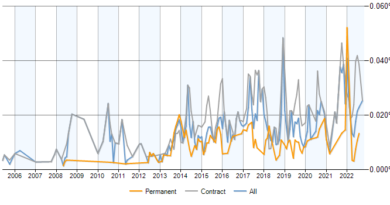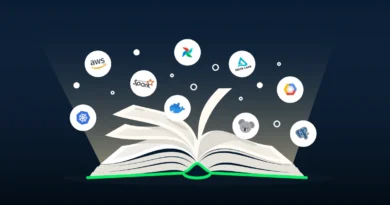Free Business Intelligence Analyst Course (6Months)
Business Intelligence Analyst:

Brief Job Role Description: Individuals at this job are responsible for performing different aspects of Business Analysis. S/he will be responsible for importing and preprocessing data and perform exploratory analysis to derive actionable insights.
Personal Attributes: A BI analyst needs to have strong analytical skills and problem solving ability. S/he needs to have good communication skills to work with stakeholders across multiple teams such as marketing, sales, product development, etc.

Collect and define business requirements by interacting with clients:
Collect requirements
To be competent, the user/individual on the job must be able to:
PC1. assess the current business of the client
PC2. assess technical capabilities of the client
PC3. conduct business contextual discussions with the client
Define requirements
To be competent, the user/individual on the job must be able to:
PC4. evaluate and define the requirements of the client
PC5. map the requirements to the capabilities of the team or organization responsible for delivering on them
PC6. create documentation on the requirements
PC7. validate requirements with appropriate stakeholders, both internal and external to the organization
. Organizational
Context
The user/individual on the job needs to know and understand:
KA1. organizational policies, procedures and guidelines which relate to collecting and defining business requirements
KA2. different data sources and how to access documents and information from data sources
KA3. organizational policies and procedures for sharing data
KA4. organizational policies and procedures for documenting requirements
KA5. who to involve when defining requirements
KA6. the range of standard templates and tools available and how to use them
Technical
Knowledge
The user/individual on the job needs to know and understand:
KB1. different business and technological trends
KB2. how to conduct business contextual discussions
KB3. different types of requirements could be related to a product, business, technology etc.
KB4. how to evaluate and define requirements
Listening and Speaking Skills
The user/ individual on the job needs to know and understand how to:
SA1. ask for clarification and advice from appropriate people
SA2. listen effectively and orally communicate information accurately
Customer Centricity
The user/ individual on the job needs to know and understand how to:
SA3. work effectively in a customer facing environment
SA4. build and maintain positive and effective relationships with clients

Import data as per specifications:
Define data type and sources
To be competent, the user/individual on the job must be able to:
PC1. identify the objective of the analysis
PC2. define the type of data to be imported
PC3. define the volume of data to be imported
PC4. define the key variables to be imported
PC5. identify suitable sources for the data
Acquire the data
To be competent, the user/individual on the job must be able to:
PC6. perform operations to acquire the data and store it in datasets or data frames
PC7. populate metadata for the imported data
PC8. validate imported data using appropriate tools & processes
PC9. validate the desired output with the relevant stakeholders within the organization, if required
. Organizational
Context (Knowledge of the company/ organization and its processes)
The user/individual on the job needs to know and understand:
KA1. the purpose and aims of the statistical analysis being undertaken
KA2. organizational policies, procedures and guidelines which relate to importing data
KA3. different data sources and how to access documents and information from data sources
KA4. organizational policies and procedures for sharing data
KA5. who to consult when importing data
KA6. the range of standard templates and tools available and how to use them
Technical
Knowledge
The user/individual on the job needs to know and understand:
KB1. the difference between various types of data. For example,
• enterprise vs consumer data
• qualitative vs quantitative data
• processed vs unprocessed data
KB2. different statistical analysis softwares, packages, libraries and tools that can be used to import & validate data such as R or Pandas
KB3. different functions to read data from various file formats and import it to a dataset or data frame
KB4. the metadata associated with imported data and how to populate it
KB5. how to store and retrieve information
KB6. how to work on various operating systems such as linux, ubuntu, or windows
Reading Skills
The user/ individual on the job needs to know and understand how to:
SA1. follow instructions, guidelines, procedures, rules and service level agreements
Analytical Thinking
The user/ individual on the job needs to know and understand how to:
SA2. evaluate impact analysis of the various actions performed and disseminate relevant information to others
Attention to Detail
The user/ individual on the job needs to know and understand how to:
SA3. check your work is complete and free from errors
Preprocess data as per specifications:
Define the dataset
To be competent, the user/individual on the job must be able to:
PC1. define the format and structure for the dataset
PC2. define indexes and organize variables as per the defined format
PC3. identify data types for each variable of the dataset
Perform data preprocessing operations
To be competent, the user/individual on the job must be able to:
PC4. identify and fix missing values in each variable of the dataset
PC5. identify and fix incorrect data types in each variable of the dataset
PC6. sort the data and create subsets of the data as required
PC7. perform operations to transform data types of variables as required
PC8. identify and deal with data redundancy by normalizing the dataset
PC9. validate preprocessed data using appropriate tools and processes
. Organizational
Context
The user/individual on the job needs to know and understand:
KA1. the purpose and aims of the statistical analysis being undertaken
KA2. organizational policies, procedures and guidelines which relate to preprocessing data
KA3. different data sources and how to access documents and information from data sources
KA4. organizational policies and procedures for sharing data
KA5. whom to consult while preprocessing data
KA6. the range of standard templates and tools available and how to use them
Technical
Knowledge
The user/individual on the job needs to know and understand:
KB1. the difference between various types of data. For example,
• qualitative vs quantitative data
• processed vs unprocessed data
• discrete vs continuous data
KB2. different statistical analysis software, packages, libraries and tools that can be used to preprocess data such as R or Pandas
KB3. different functions to identify and remove missing values
KB4. different functions to identify and transform data types of variables such as integer, float, character
KB5. different methodological approaches for normalizing the dataset such as standard score, feature scaling, etc.
KB6. different data formats and structures
KB7. how to index and organize data
KB8. how to identify and refer anomalies in data
KB9. how to work on various databases and operating systems
Analytical Thinking
The user/ individual on the job needs to know and understand how to:
SA1. evaluate impact analysis of the various actions performed and disseminate relevant information to others
SA2. analyze data and understand its implications on business
Attention to Detail
The user/ individual on the job needs to know and understand how to:
SA3. check your work is complete and free from errors

Perform exploratory data analysis as per specifications:
Define the dataset
To be competent, the user/individual on the job must be able to:
PC1. identify the data types for each variable of the dataset
PC2. identify the key variables required for modelling or analysis
Summarize and optimize the dataset
To be competent, the user/individual on the job must be able to:
PC3. use statistical techniques to summarize the key variables in the dataset
PC4. describe summary statistics for key variables using graphical formats
PC5. perform dimension reduction to optimize the variables in the dataset, if required
PC6. define the correlation factors using clustering and other techniques
PC7. validate data using appropriate tools and processes
PC8. repeat the analysis iteratively to arrive at optimal results
PC9. validate the final output in consultation with the relevant stakeholders
PC10. gain inferences from the final output of the data analysis
PC11. develop a hypothesis model to explain the discovered inferences
PC12. evaluate the results of the analysis and define business outcomes
PC13. define prescriptive actions based on the defined business outcomes
Organizational
Context
The user/individual on the job needs to know and understand:
KA1. the purpose and aims of the statistical analysis being undertaken
organizational policies, procedures and guidelines which relate to performing exploratory analysis
KA3. different data sources and how to access documents and information from data sources
KA4. organizational policies and procedures for sharing data
KA5. who to involve when performing exploratory analysis
KA6. the range of standard templates and tools available and how to use them
Technical
Knowledge
The user/individual on the job needs to know and understand:
KB1. the difference between various types of data. For example,
• qualitative vs quantitative data
• discrete vs continuous data
• processed vs unprocessed data
KB2. different statistical analysis software, packages, libraries and tools that can be used to summarize data such as R, Numpy, Statsmodels, or Pandas
KB3. different functions to summarize variables across different data types such as integer, float, or character
KB4. different graphical formats to describe summary statistics
KB5. different methodological approaches for dimension reduction such as PCA, LDA, or NMF
KB6. different methodological approaches for defining correlations between variables such as the scatter diagram method, correlation coefficients, method of least squares
KB7. multivariate visualizations, for mapping and understanding interactions between different fields in the data
KB8. how to make inferences from analysed data and explain it using a hypothesis model
KB9. different types of prescriptive actions
KB10. how to identify and refer anomalies in data
KB11. how to work on various operating systems such as linux, ubuntu, or windows
Analytical Thinking
The user/ individual on the job needs to know and understand how to:
SA1. evaluate impact analysis of the various actions performed and disseminate relevant information to others
SA2. analyze data and understand its implications on business
Manage your work to meet requirements:
Utilize resources
To be competent, the individual working on the job must be able to:
PC1. establish and agree your work requirements with appropriate people
PC2. keep your immediate work area clean and tidy
PC3. utilize your time effectively
PC4. use resources correctly and efficiently
PC5. treat confidential information correctly
Ensure compliance
To be competent, the individual working on the job must be able to:
PC6. work in line with your organization’s policies and procedures
PC7. work within the limits of your job role
PC8. obtain guidance from appropriate people, where necessary
PC9. ensure your work meets the agreed requirements
Organizational
Context
The individual on the job needs to have knowledge of:
KA1. your organization’s policies, procedures and priorities for your area of work and your role and responsibilities in carrying out your work
KA2. limits of your responsibilities and when to involve others
KA3. your specific work requirements and who these must be agreed with
KA4. the importance of having a tidy work area and how to do this
KA5. how to prioritize your workload according to urgency and importance and the benefits of this
KA6. your organization’s policies and procedures for dealing with confidential information and the importance of complying with these
KA7. the purpose of keeping others updated with the progress of your work
KA8. who to obtain guidance from and the typical circumstances when this may be required
KA9. the purpose and value of being flexible and adapting work plans to reflect change
Technical
Knowledge
The individual on the job needs to know and understand:
KB1. the importance of completing work accurately and how to do this
KB2. appropriate timescales for completing your work and the implications of not meeting these for you and the organization
KB3. resources needed for your work and how to obtain and use these
KB4. how to store and retrieve information
KB5. how to identify and refer anomalies in data
KB6. how to use information technology effectively to input and/or extract data accurately
KB7. how to keep up to date with changes, procedures and practices in your role
Writing Skills
SA1. complete accurate well written work with attention to detail
Reading Skills
SA2. follow instructions, guidelines, procedures, rules and service level agreements
Listening and Speaking Skills
SA3. ask for clarification and advice from appropriate people
SA4. listen effectively and orally communicate information accurately
Decision Making
SA5. make a decision on a suitable course of action
Plan and Organize
SA6. plan and organize your own work to achieve targets and deadlines
SA7. provide accurate reports to line managers in a timely manner as required
Customer Centricity
SA8. check that your own and/or your peers’ work meets customer requirements
SA9. deliver consistent and reliable service to customers
Problem Solving
SA10. refer anomalies to the supervisor
SA11. seek clarification on problems from others
Analytical Thinking
SA12. analyze data and activities
SA13. pass on relevant information to others
Critical Thinking
SA14. apply balanced judgments to different situations
Attention to Detail
SA15. check your work is complete and free from errors
SA16. get your work checked by others
Team Working
SA17. work effectively in a team environment
Work effectively with colleagues:
Communicate with colleagues
To be competent, the individual working on the job must be able to:
PC1. communicate with colleagues clearly, concisely and accurately
PC2. work with colleagues to integrate your work effectively with them
PC3. pass on essential information to colleagues in line with organizational requirements
Show respect
To be competent, the individual working on the job must be able to:
PC4. work in ways that show respect for colleagues
PC5. carry out commitments you have made to colleagues
PC6. let colleagues know in good time if you cannot carry out your commitments, explaining the reasons
PC7. identify any problems you have working with colleagues and take the initiative to solve these problems
PC8. follow the organization’s policies and procedures for working with colleagues
Organizational
Context
The individual on the job needs to have knowledge of:
KA1. your organization’s policies and procedures for working with colleagues and your role and responsibilities in relation to this
KA2. the importance of effective communication and establishing good working relationships with colleagues
KA3. different methods of communication and the circumstances in which it is appropriate to use these
KA4. benefits of developing productive working relationships with colleagues
KA5. the importance of creating an environment of trust and mutual respect in an environment where you have no authority over those you are working with
KA6. where you do not meet your commitments, the implications this will have on individuals and the organization
Technical
Knowledge
The individual on the job needs to know and understand:
KB1. different types of information that colleagues might need and the importance of providing this information when it is required
KB2. the importance of understanding problems from your colleague’s perspective and how to provide support, where necessary, to resolve these
KB3. how to identify and refer anomalies in data
KB4. how to help reach agreements with colleagues
KB5. how to keep up to date with changes, procedures and practices in your role
Writing Skills
SA1. complete accurate well written work with attention to detail
SA2. communicate effectively with colleagues in writing
Reading Skills
SA3. follow instructions, guidelines, procedures, rules and service level agreements
Listening and Speaking Skills
SA4. ask for clarification and advice from appropriate people
SA5. listen effectively and orally communicate information accurately
Decision Making
SA6. make a decision on a suitable course of action
Plan and Organize
SA7. plan and organize your own work to achieve targets and deadlines
Customer Centricity
SA8. check that your own and/or your peers’ work meets customer requirements
SA9. deliver consistent and reliable service to customers
Problem Solving
SA10. apply problem solving approaches in different situations
Critical Thinking
SA11. apply balanced judgments to different situations
Attention to Detail
SA12. check your work is complete and free from errors
SA13. get your work checked by others
Team Working
SA14. work effectively in a team environment
SA15. work effectively with colleagues and other teams
SA16. treat other cultures with respect
Guidelines for Assessment
- Criteria for assessment for each Qualification Pack will be created by the Sector Skill Council. Each Performance Criteria (PC) will be assigned marks proportional to its importance in NOS. SSC will also lay down proportion of marks for Theory and Skills Practical for each PC.
- The assessment for the theory part will be based on knowledge bank of questions created by the SSC.
- Assessment will be conducted for all compulsory NOS, and where applicable, on the selected elective/option NOS/set of NOS.
- Individual assessment agencies will create unique question papers for theory part for each candidate at each examination/training center (as per assessment criteria below).
- Individual assessment agencies will create unique evaluations for skill practical for every student at each examination/training center based on this criterion.
- To pass a QP, a trainee should score an average of 70% across generic NOS’ and a minimum of 70% for each technical NOS
- In case of unsuccessful completion, the trainee may seek reassessment on the Qualification Pack.








